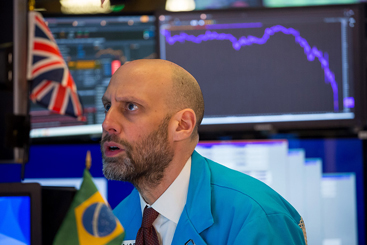
Thursday, June 04, 2020
Where will the S&P 500 be by the end of 2020?
By Century Financial in 'Brainy Bull'


The S&P 500 has rallied since its March lows. Will this continue for the rest of 2020, or are there some sharp sell-offs for the index to come?
At the back end of last year, the question was whether the S&P 500 would continue its historic bull run into 2020. We all now know the answer to that one. The coronavirus caused an unprecedented crash as investors fled global stock markets, hitting the index hard.
Yet since hitting a low of $2,191.86 in March, the S&P 500 has rallied almost 37.7% off the back of lockdown easing, vaccine rumours and government stimulus packages.
Will this be enough for the S&P 500 index to close the gap on last year? Or will the second half of the year see even steeper sell-offs?


What traders should watch out for
Fear of missing out mentality
Since the March lows, the S&P 500 is up by more than a third. Such momentum is seeing more traders buy into the markets, even if that means there's a risk of getting burnt.
“There’s an element of fear of missing out — FOMO — as investors start to look at the momentum,” said Emily Roland, co-chief investment strategist for John Hancock Investment Management. “They are looking for an opening, they know it’s possible to get hurt, but they are just going for it.”
But markets could be getting ahead of themselves. A vaccine could actually be years away and the colder months could see a second wave of infections. Lockdown measures could be reversed - as has happened in South Korea - and government stimulus packages will eventually end.
Investors really need to weigh up the risks before jumping on any bandwagon.


Q2 company earnings will be brutal
Q2 company earnings should give a better picture of which way S&P 500 is heading. However, these could be brutal. According to Refinitiv data, S&P 500 companies are looking at a 42.7% drop in earnings for Q2. This is much steeper than the 12.6% fall seen in Q1. Falls are expected to be less severe in the subsequent two quarters, before a 30.9% jump in earnings in 2021.
“Q2 earnings are likely to be the worst, although third-quarter earnings may not be much better. Some of this will depend on the effectiveness and adequacy of fiscal stimulus going forward,” Kristina Hooper, chief global market strategist at Invesco in New York told Reuters.
Traders should be prepared for some stomach-churning sell-offs when companies report later this year.


Superpower tensions cause volatility
Headwinds include US-China relations. Last week, news broke that Beijing was pushing ahead with legislation calling into question Hong Kong's centre as a financial hub. This caused a terse response from President Trump and sucked momentum out of the S&P 500. The spat between the two countries is likely to continue to move the index throughout the year.
“Geopolitical risks from US-China relations do not appear to be fully priced in, although we believe China’s V-shaped recovery will remain on track,” said Joyce Chang, chair of global research at JPMorgan, in the FT.


So where will the S&P 500 end 2020?
Well, according to a Reuters poll from nearly 50 market strategists, around the $2,950 mark. That's around 4.2% lower than the current level and an 8.7% drop from the end of last year. A return to the March lows is unlikely, at least according to the analysts Reuters talked to, but there's still a lot of risk in the markets.
In the poll, Kristina Hooper pinned a bullish $3,100 target on the S&P 500. More cautious was Daniel Morgan at the Synovus Trust Company, who set a $2,960 target citing the uncertainty in the market.
Source: This content has been produced by Opto trading intelligence for Century Financial and was originally published on cmcmarkets.com/en-gb/opto
Disclaimer: Past performance is not a reliable indicator of future results.
The material (whether or not it states any opinions) is for general information purposes only and does not take into account your personal circumstances or objectives. Nothing in this material is (or should be considered to be) financial, investment or other advice on which reliance should be placed. No opinion given in the material constitutes a recommendation by Century Financial or the author that any particular investment, security, transaction or investment strategy is suitable for any specific person.
Century Financial does not endorse or offer opinion on the trading strategies used by the author. Their trading strategies do not guarantee any return and Century Financial shall not be held responsible for any loss that you may incur, either directly or indirectly, arising from any investment based on any information contained herein.















